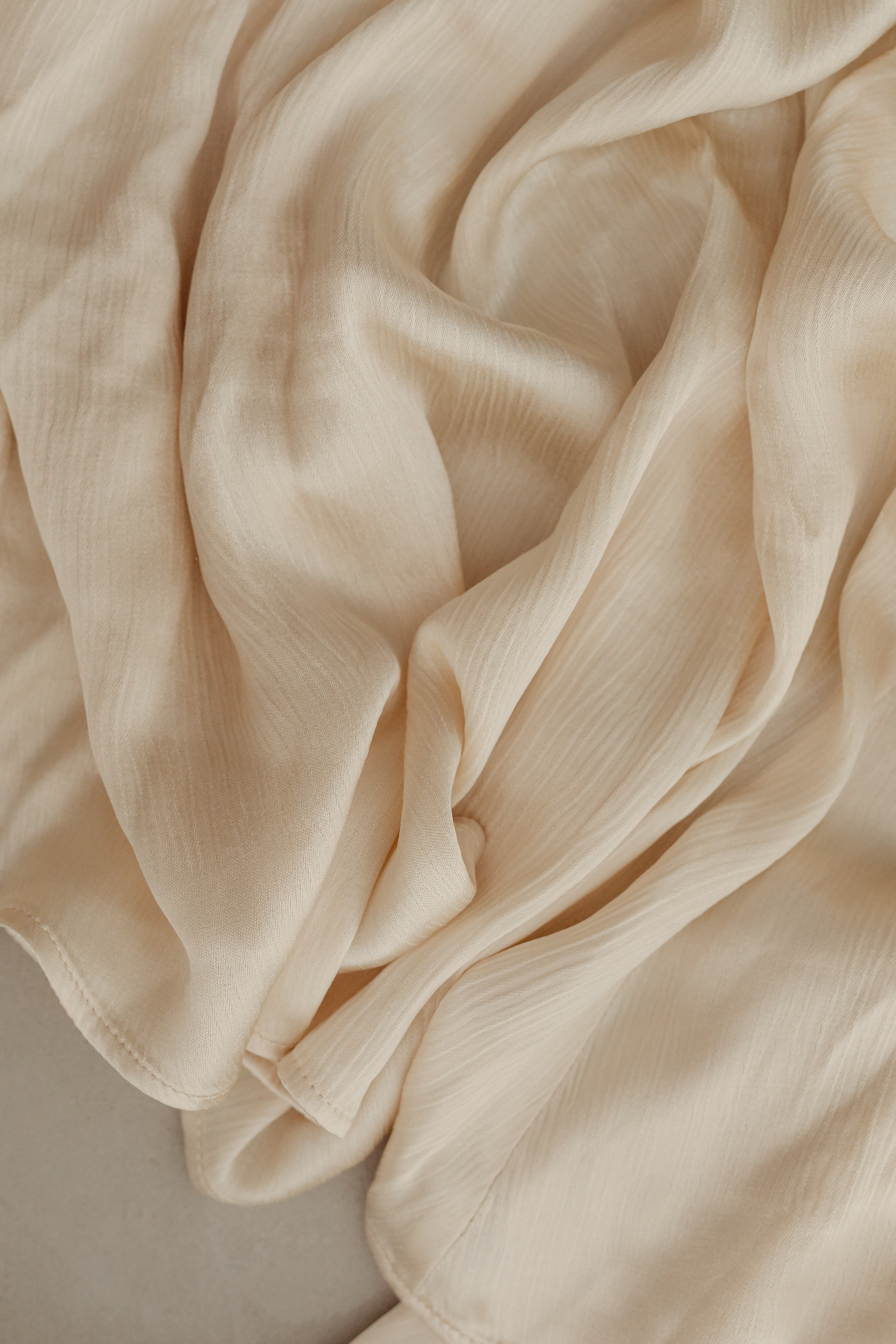In order for a clothing material to be used in a piece of clothing, considerable time is spent to extract these raw materials, process them into fabric, and patch them up as a garment. Hence, a material can be deemed sustainable if it contributes to reducing the environmental impacts during this life cycle. We introduce five fibers we can choose from that help make an item of clothing more sustainable.


Organic cotton uses non-GMO seeds and nontoxic chemicals in fertilizers or pesticides, using farming methods that produce 94% less carbon dioxide and increase soil fertility and biodiversity - however, only 1% of the entire cotton production is organic. Recycled cotton is another sustainable plant-fiber alternative to conventional cotton. It utilizes post-consumer/industrial cotton waste and can save 20,000 liters of water per kilogram of cotton by reducing the demand for resource-intensive cotton production and textile waste from landfills.


Linen has been used and known for its quality and functionality for thousands of years, dating all the way back to the 5th millennium BC in China. Linen is created using the fibers from the stem of flax plants. Not only is it fully biodegradable when untreated - being a natural resource - it uses less water and pesticides to grow compared to cotton. Across its lifecycle, a linen shirt uses 6.4 liters of water compared to 2,700 liters for cotton. It also absorbs carbon in the air, up to 2.1 tons per ton of flax produced. If given the choice, we recommend choosing organically produced linen that does not use toxic chemicals in retting (the process of deriving fiber from the plant stem) and/or bleaching.
Hemp is made from cannabis plant stems and is biodegradable. It doesn’t need pesticides nor synthetic fertilizers - it itself is a natural fertilizer and returns 60-70% of the nutrients it takes from the soil. 50% less water is used per season than cotton. Being yield efficient is also an important factor in production, and hemp has the highest yields per acre of any natural fiber, producing 250% more fiber than cotton and 600% more than flax. Like linen, we recommend organic hemp as more sustainable.

Tencel Lyocell is a form of rayon and is more often familiar with us as the brand name TENCEL®. Tencel is known for environmentally responsible closed-loop production process where the wood pulp is transformed into cellulosic fibers with low environmental impact. To create TENCEL® Lyocell, the process recycles water and reuses the solvent at a recovery rate of more than 99%. The clothing lines made with TENCEL® Lyocell, are long-lasting, soft, and have great durability.
Wool refers to fiber derived from the fleece of sheep, but it also has been interchangeably used to include those from angora and cashmere goats, alpaca, llama, and other animals. Although only 1% of all global fiber production in 2019 was wool, it is still commonly used for its fiber qualities including but not limited to durability and insulation. Being a naturally derived fiber, wool is also renewable and microplastic-free. Wool is highly recyclable, which is why we advocate recycled wool. Taking up 5% in the market share of recycled fibers, it not only reduces textile waste but also prolongs the life cycle of wool which is already considerably long (20-30 years), greatly reducing its impacts.
Imagine a fiber as soft as silk and as sustainable as bamboo–meet Micromodal. Derived from the pulp of beech trees, these trees are unique in their "rejuvenation" capabilities, where they regrow from the stump, bypassing the need for replanting. Micromodal is a testament to comfort meeting sustainability, offering breathability alongside environmental consciousness. The closed-loop production process ensures that almost all chemicals used are recaptured and reused, thereby substantially decreasing waste and environmental impact.


Organic silk is a refreshing new take on traditional silk. By protecting the silkworms in the production process and resorting to pesticide-free, organic mulberry tree farming, it carves out a unique niche in sustainable fashion. Its cruelty-free mantra coupled with chemical-free farming provides a compelling case for its inclusion in the eco-friendly landscape.
Considered one of the oldest forms of sustainable fashion, flax is where we get linen. Requiring minimal water and zero synthetic pesticides or fertilizers, the flax plant presents itself as a less resource-intensive alternative to conventional cotton. During production, the entire plant can also be used, producing no waste, and untreated linen can be biodegradable and even compostable. With flax and linen, we're looking at a winning combination of sustainable, low-impact textile production.
The 'golden fiber,' as Jute is fondly called, is the bark of the jute plant. Not only does this plant demand little water or pesticides to grow, but it also introduces us to the concept of circular fashion by being 100% biodegradable and recyclable. Jute guarantees quality and durability while suggesting a viable solution to reduce the environmental footprint of the textile industry.
Certifications to look for: USDA-certified organic, Global Organic Textile Standards (GOTS), Global Recycled Standard (GRS), Recycled Claim Standard (RCS), Better Cotton Standard, Fair Trade, Oeko-Tex 100, and Bluesign. The supply chain of how fiber is produced and a garment is made is complicated, consisting of multiple processes from extraction and processing of raw materials to consumer use and end of life, making it difficult to assess its sustainability. However, there are materials and certifications offering more sustainable alternative options in the market, and more clothing brands are using sustainable materials to create their collections.

Photos by
Unsplash




